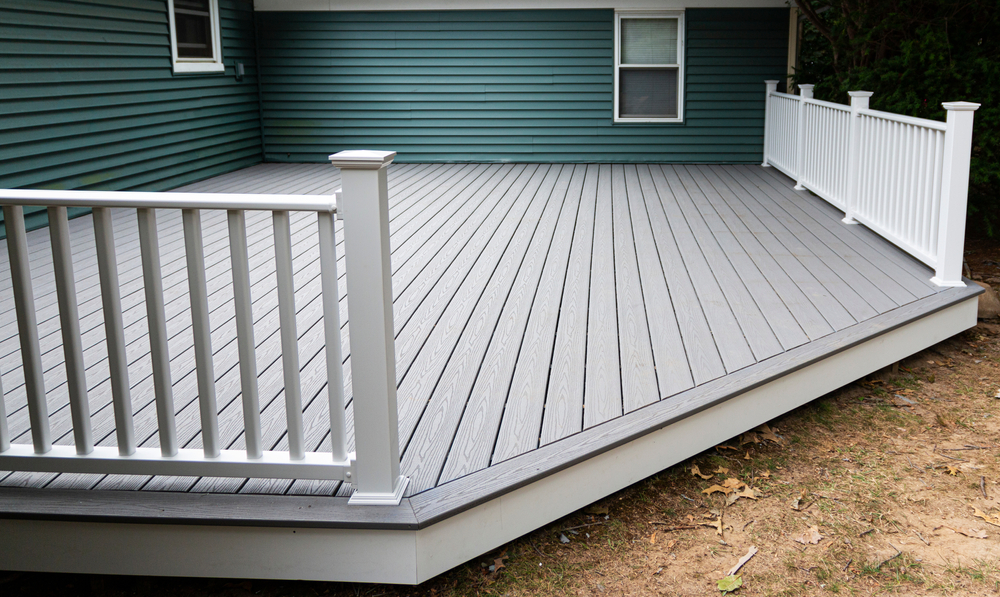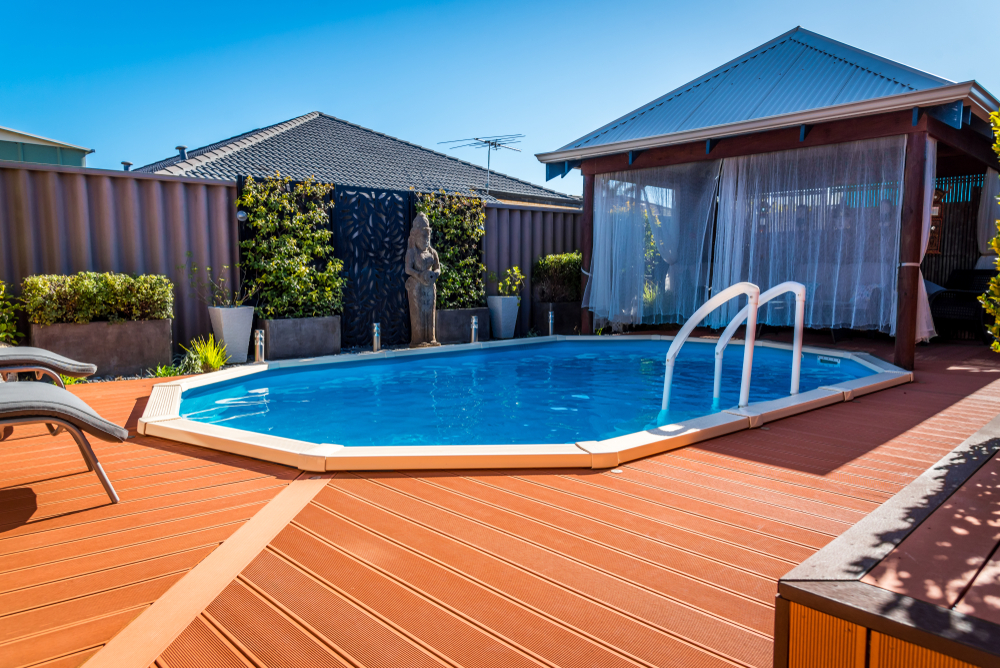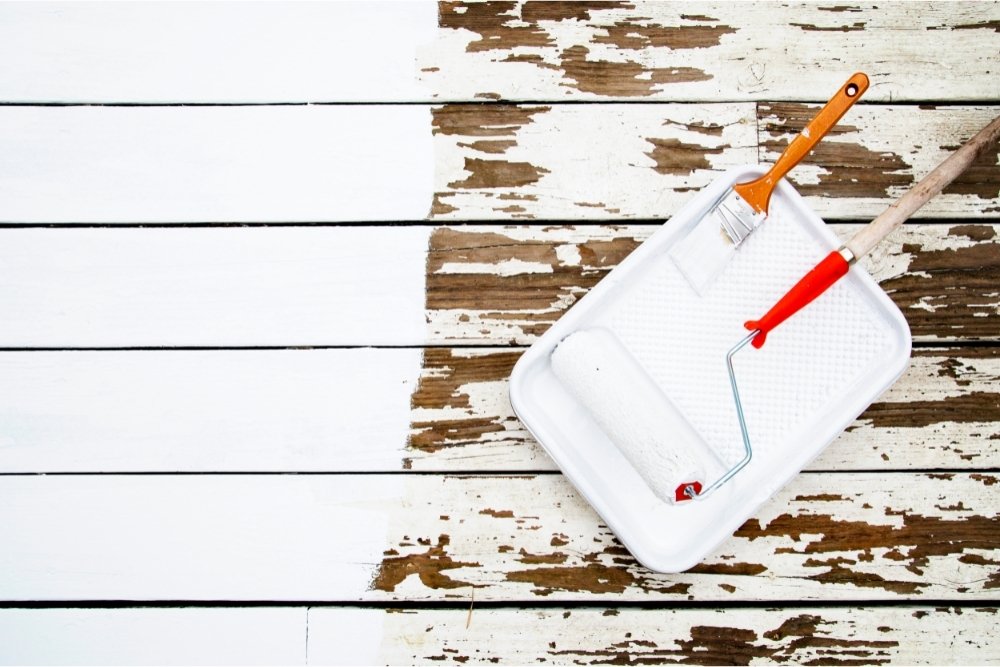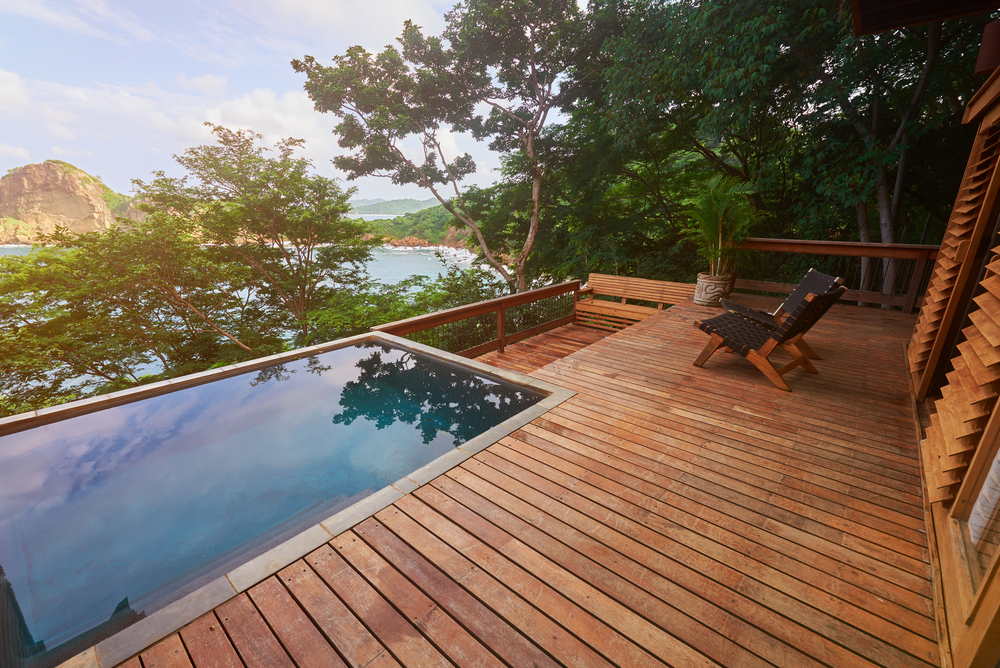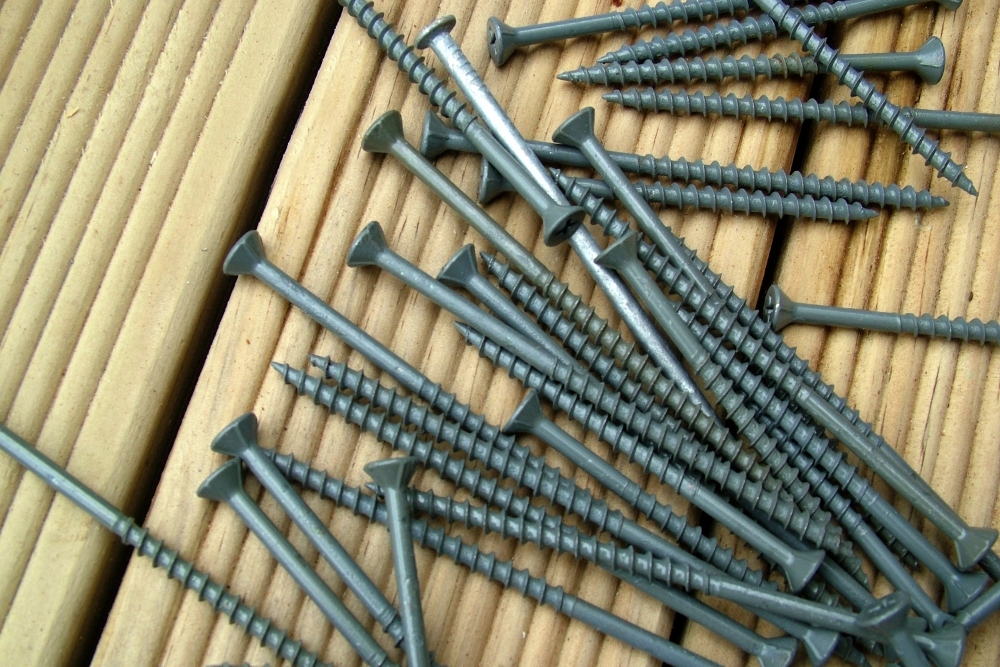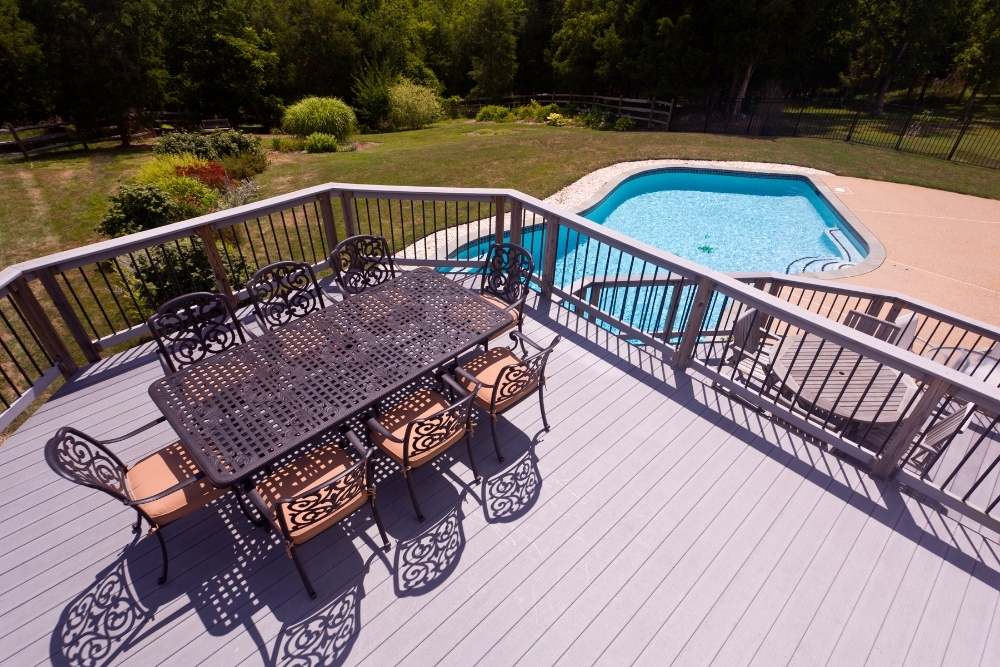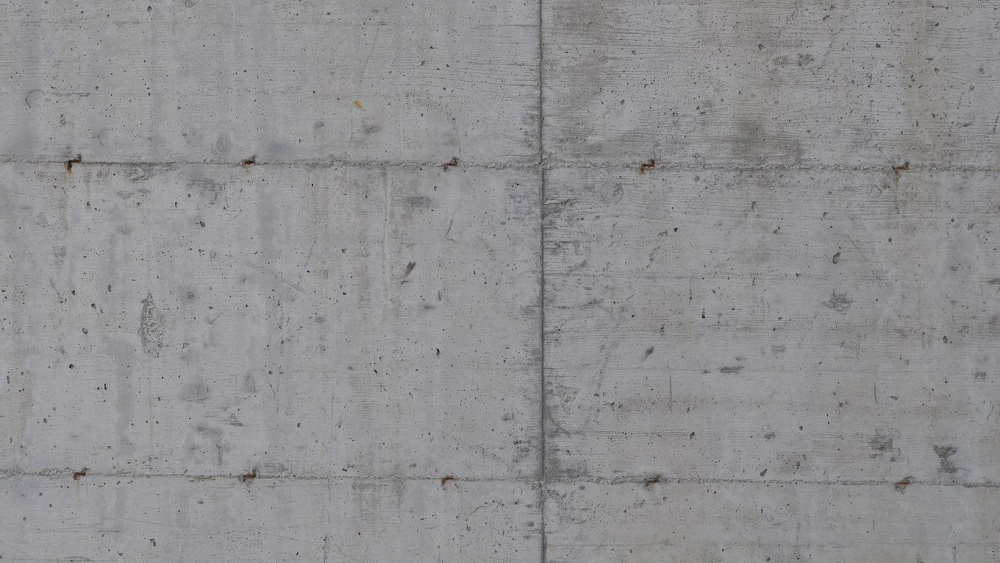Decks are amazing places for relaxing and entertaining, but that does mean they suffer from regular wear and tear. Worn down patches are made worse by exposure to the elements, and eventually decking starts to look more than a little worse for wear.
Of course, if there’s anything worse than a deck that’s been used too much, then it’s a deck that doesn’t get used at all. While we all might want to keep our decks pristine, the better solution is to find ways to fix a broken deck.
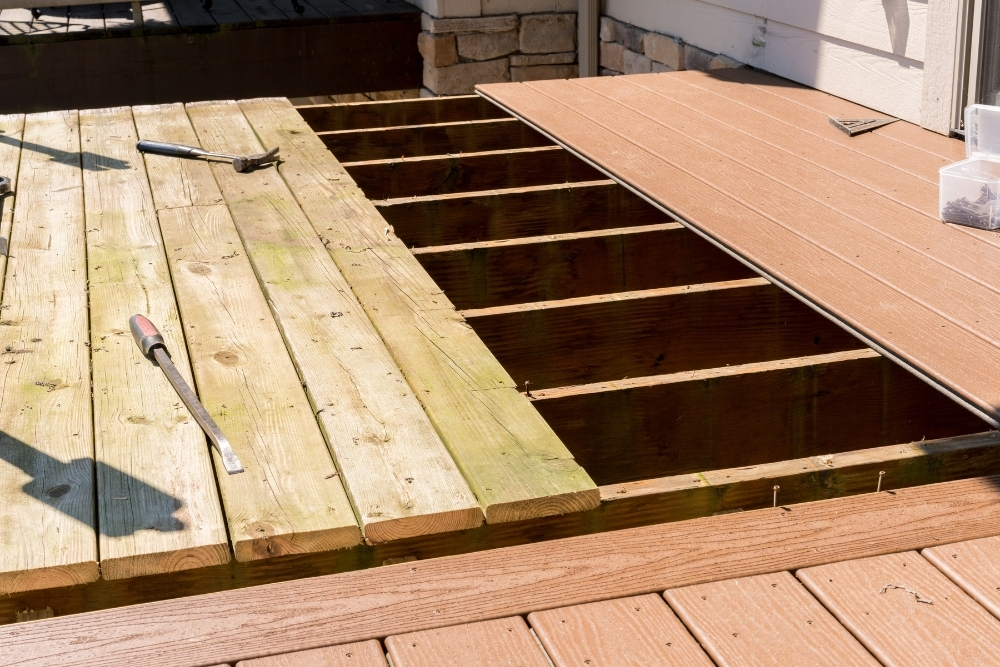
For many, Trex presents an easy solution. Composite wooden decking can be used to cover up those safety hazards the old boards present, and create a fresh new deck.
But is composite decking over an existing deck an actual workable solution? In this guide, we cover whether composite decking covering is a viable option, or just a temporary stop gap.
Can you put Trex over existing deck?
Perhaps the spring is coming, and you’ve noticed your deck is looking more than a little worse for wear. While using something like the Sun Joe High Pressure Washer (on Amazon) to start with a quick power wash may be all you need to spruce your deck up for the season, sometimes you’re just past that point in the wood’s age. You can see years of future repairs and maintenance coming up, and you’re looking for an easier solution. In that case, you may be thinking of composite decking.
Or, perhaps your wood deck is still looking good, but you’re tired of the maintenance it requires. A composite cover can seem like a time-saving solution.
Composite decking, such as Trex, is man made decking constructed from a range of materials including wood fibers, plastics, and bonding agents. Manufactured into the shape of a wooden board, this new material is low maintenance and easy to use. Many have made composite materials their first choice for all their outdoor needs.
As it is easier to use, you might think about placing it directly on top of your wooden deck. Technically, this is possible. If the wood underneath is sound, but not looking its best, it should be able to support the new, composite decking.
This gives you an easy to care for deck, without the cost of dismantling and starting all over again. In turn, the composite decking is able to last longer, and you have more time to sit back and enjoy it.
If the wood is looking worse for wear, you can cover it with composite decking. Trex is a high quality material, and it isn’t subject to the same rot and wear of natural wood. This reduces the cost an entirely new structure would require, and the labor time.
It can, possibly, present a long term solution. However, things aren’t quite that simple.
Should you put Trex over existing deck?
While it is possible to put composite decking, such as Trex, over an existing deck, in most cases you probably shouldn’t. All you’re doing is covering up the problem, and you may find it comes back to haunt you in the long run.
The first thing to consider is the quality of the wood underneath. Before covering the old timber with Trex, a thorough inspection is necessary. Any weak points need to be identified, such as areas where the existing wood may be soft or rotting.
If there are any weak spots, then it isn’t safe to put composite decking on top. The problems beneath will eventually affect the decking on top, as it’s providing support.
The composite decking can trap moisture, exacerbating any rotting, and causing the structural integrity of the deck to weaken. Eventually the wood will wear through, and take the Trex down with it. This is an important note, since many deck-owners are tempted to ignore rotting wood, thinking that adding yet another handful of Deck Plus Wood Screws (on Amazon) will keep things sturdy. This works for a while.
Another thing you have to consider when placing composite decking on top is the drainage. Without proper drainage, water will become trapped between the two layers. While the composite decking might seem strong, underneath the timber is rotting away.
Eventually, this problem will make itself known. If you’re placing composite decking over strong wood, be careful to line up the decking perfectly, so water can drain all the way through.
It’s also vital that the extra weight is supported. The basic structure of the deck will have been designed to hold a certain weight limit – and composite decking will increase the weight greatly. By placing Trex directly on top of an existing deck, the entire structure is at a risk of collapse.
What to do instead
If you’re dreading the cost of building a new deck, there is a much simpler solution. Rather than just laying the Trex over the old deck, you can use it to replace the existing timber.
This isn’t quite as easy a process, but the returns are more than worth it. The first thing to do is to check the strength of the frame. If the frame seems structurally sound, then it should be okay to replace the boards.
Next, remove all the old wooden deck boards. This can be a long job – having to rip every board off the frame is time-consuming. However, the future pay off is significantly greater than the time spent removing. If the deck was screwed together, you can simply unscrew the screws, but for older decks fixed with nails you may want a Nail Puller/Pry Bar (from Amazon) on hand to help pry things apart.
By doing this, you ensure that there’s a solid structure beneath the composite decking. No one wants to lay Trex over an old deck, only to have to remove it all in a few months when the wood rots away.
With the boards removed, you have to work on strengthening the frame to ensure it can support the Trex. Extra joists may be necessary just to support the new weight.
Once you’re confident in the quality of your frame, it’s a simple matter of installing the Trex. This can be done relatively quickly, and without a great additional cost.
Whether you intend to replace the old decking entirely, or to simply place the Trex on top, the most important thing is that the frame and foundation are sound. Check these thoroughly for any areas of weakness. If your deck is rotting badly, there’s a good chance there may be a problem in the frame as well.
Replacing an existing deck with Trex is a cost-effective way to prolong the longevity of a good deck.

